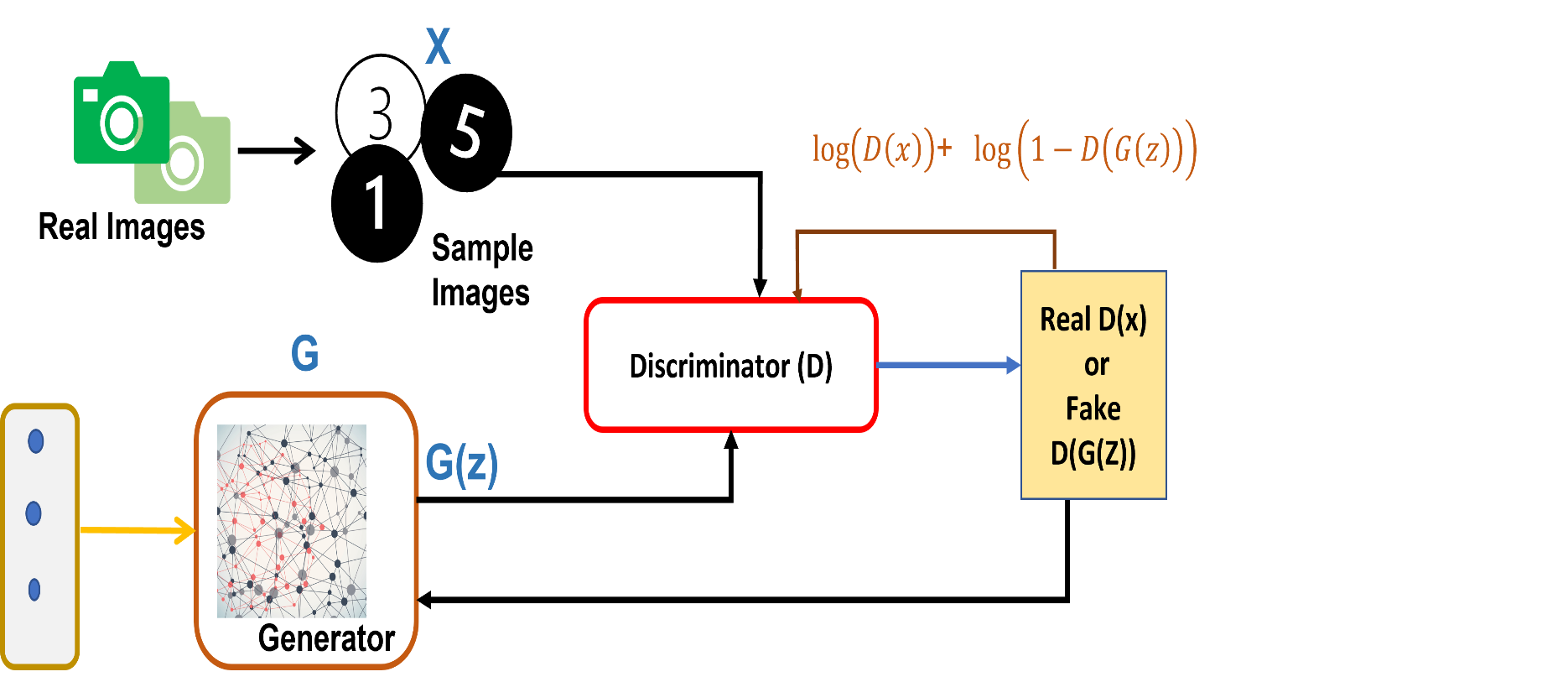Generative Adversarial Networks as a Data Augmentation Tool for Handwritten Digits
Main Article Content
Abstract
In the field of data processing, handwritten digit recognition (HDR) has proven to be of great use. However, due to the vast differences in how different people write, accurate recognition of such characters from images is a challenging job. The labelled samples necessary for supervised learning methods are not always easy to come by. For instance, a lot of labelled examples are needed to train a model in deep learning approaches, where all the feature extraction steps are learned within the artificial neural network. To get around this problem, data augmentation methods can be used to fill in the gaps using variations in an example's label that are already known. The Generative Adversarial Network (GAN) is able to generate random samples from the latent space that are statistically indistinguishable from the training set's actual examples. In this study, we leverage the powerful features of GAN to learn from the MNIST data set and produce digital images of handwriting.
Article Details
References
F. Siddique, S. Sakib, and M. A. B. Siddique, ‘Recognition of handwritten digit using convolutional neural network in python with tensorflow and comparison of performance for various hidden layers’, in 2019 5th international conference on advances in electrical engineering (ICAEE), 2019, pp. 541–546.
A. Hasib Uddin, J. Khatun, M. Afroz Meghna and P. Mahmud, "Bangla Handwritten Digit Recognition using RNN-CNN Hybrid Approach," 2022 25th International Conference on Computer and Information Technology (ICCIT), Cox's Bazar, Bangladesh, 2022, pp. 288-293, doi: 10.1109/ICCIT57492.2022.10055089.
W. Liu, J. Wei, and Q. Meng, ‘Comparisions on KNN, SVM, BP and the CNN for Handwritten Digit Recognition’, in 2020 IEEE International Conference on Advances in Electrical Engineering and Computer Applications (AEECA), 2020, pp. 587–590.
S. Bernard, S. Adam and L. Heutte, "Using Random Forests for Handwritten Digit Recognition," Ninth International Conference on Document Analysis and Recognition (ICDAR 2007), Curitiba, Brazil, 2007, pp. 1043-1047, doi: 10.1109/ICDAR.2007.4377074.
Kusetogullari, H., Yavariabdi, A., Cheddad, A. et al. ARDIS: a Swedish historical handwritten digit dataset. Neural Comput & Applic 32, 16505–16518 (2020). https://doi.org/10.1007/s00521-019-04163-3.
Abbas Cheddad, Hüseyin Kusetogullari, Agrin Hilmkil, Lena Sundin, Amir Yavariabdi, Mustapha Aouache, Johan Hall; "SHIBR-The Swedish Historical Birth Records: A Semi-Annotated Dataset," Neural Computing & Applications, 33:15863–15875, Springer, 2021.
https://didadataset.github.io/DIDA/
J. Dahmen and D. Cook, ‘SynSys: A Synthetic Data Generation System for Healthcare Applications’, Sensors, vol. 19, no. 5, 2019.
D. Meyer and T. Nagler, ‘Synthia: multidimensional synthetic data generation in Python’, Journal of Open Source Software, vol. 6, no. 65, p. 2863, 2021.
D. Meyer, T. Nagler, and R. J. Hogan, ‘Copula-based synthetic data augmentation for machine-learning emulators’, Geoscientific Model Development, vol. 14, no. 8, pp. 5205–5215, 2021.
J. Goodfellow, J. Pouget-Abadie, M. Mirza, B. Xu, D. Warde Farley, S. Ozair, A. Courville, and Y. Bengio, “Generative adversarial networks,” 2014.
F. Eckerli and J. Osterrieder, ‘Generative Adversarial Networks in finance: an overview’, arXiv [q-fin.CP]. 2021.
J. Peng et al., "Knowledge-Driven Generative Adversarial Network for Text-to-Image Synthesis," in IEEE Transactions on Multimedia, vol. 24, pp. 4356-4366, 2022, doi: 10.1109/TMM.2021.3116416.
K. Liu, Z. Ye, H. Guo, D. Cao, L. Chen, and F.-Y. Wang, ‘FISS GAN: A generative adversarial network for foggy image semantic segmentation’, IEEE/CAA Journal of Automatica Sinica, vol. 8, no. 8, pp. 1428–1439, 2021.
S. Aly and S. Almotairi, "Deep Convolutional Self-Organizing Map Network for Robust Handwritten Digit Recognition," in IEEE Access, vol. 8, pp. 107035-107045, 2020, doi: 10.1109/ACCESS.2020.3000829.
H. Mansourifar, A. Moskovitz, B. Klingensmith, D. Mintas and S. J. Simske, "GAN-Based Satellite Imaging: A Survey on Techniques and Applications," in IEEE Access, vol. 10, pp. 118123-118140, 2022, doi: 10.1109/ACCESS.2022.3221123.
M. Arjovsky, S. Chintala, and L. Bottou, ‘Wasserstein GAN’, arXiv [stat.ML]. 2017.

